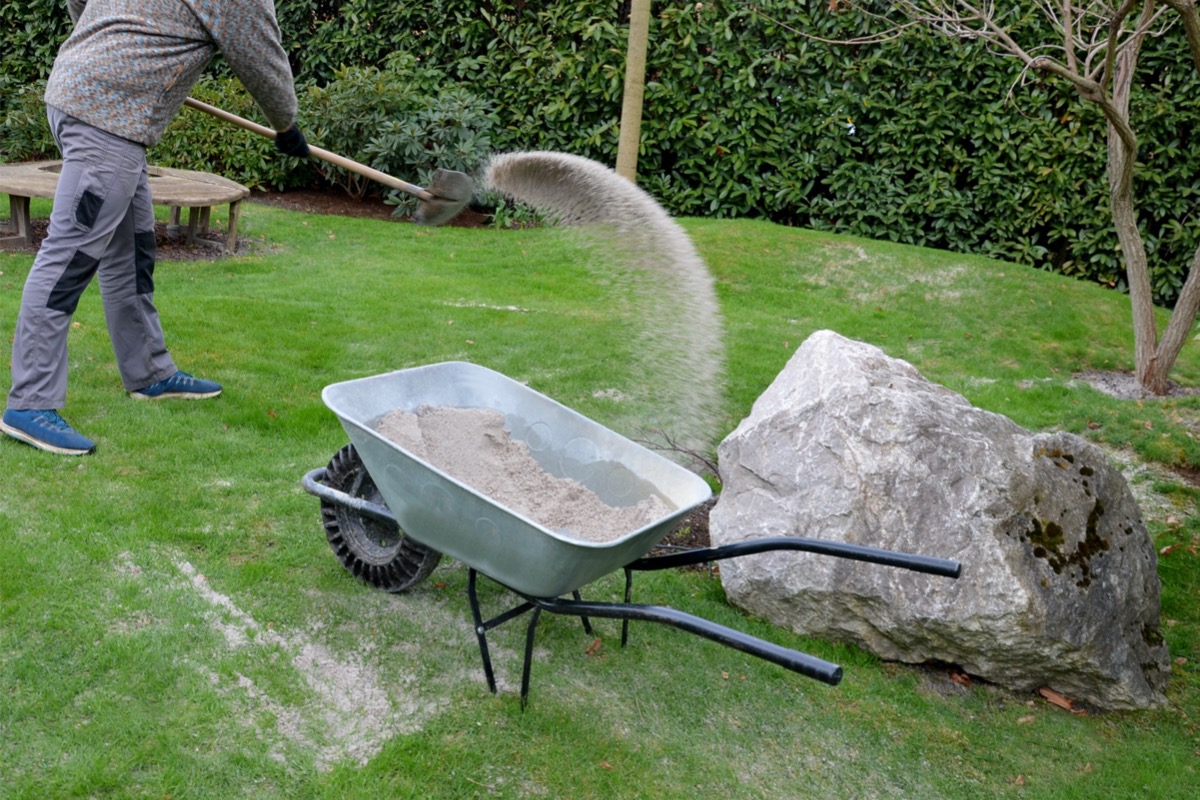

We may earn revenue from the products available on this page and participate in affiliate programs. Learn More ›
Putting in the sweat and hard work to take care of your yard can be rewarding. However, knowing the best time to take care of various lawn-care tasks—including dethatching, planting seeds, watering, and fertilizing—is not always so straightforward. Let this guide serve as your go-to for finding quick and reliable answers to these and many other common questions about spring lawn care.

When should I aerate the lawn?
Aerating the lawn allows for greater water, air, and nutrient flow to your grass, which can help it stay healthy. The best time for aeration varies depending on whether you have cool- or warm-season grass. Aerate ryegrass, bluegrass, and other cool-season grasses in early spring or early fall. Conversely, Bermuda, St. Augustine, and other warm-season grasses do best when aerated in the early summer or later spring.
Avoid aerating your lawn during a drought or during times of excessive heat. Rather, the best time to aerate the soil is when it is moist (but not so wet that water is pooling on top of it). Additionally, aim to aerate in the morning to prevent the moisture from evaporating.
RELATED: How Much Does Lawn Care Cost?
When should I dethatch the lawn?
When grass clippings or mulched leaves build up between the soil and the base of the grass, it is referred to as thatch. If too deep, this buildup can prevent sufficient levels of water, air, and nutrients from reaching the roots of the grass. The process of dethatching, which involves digging into the lawn with a dethatching rake or other tool, can be a bit stressful for the grass in the short term. For this reason, you should only dethatch your lawn when the grass is strong and healthy.
Cool-season grasses should be at their peak in the early spring or early fall, while later spring or early summer would be ideal for warm-season grasses. Dethtathcing typically only needs to be done every 2 to 3 years for adequate lawn care. You can tell it is time to dethatch your grass if you dig up a small area of grass and notice a patch of brown between the soil and the grass.
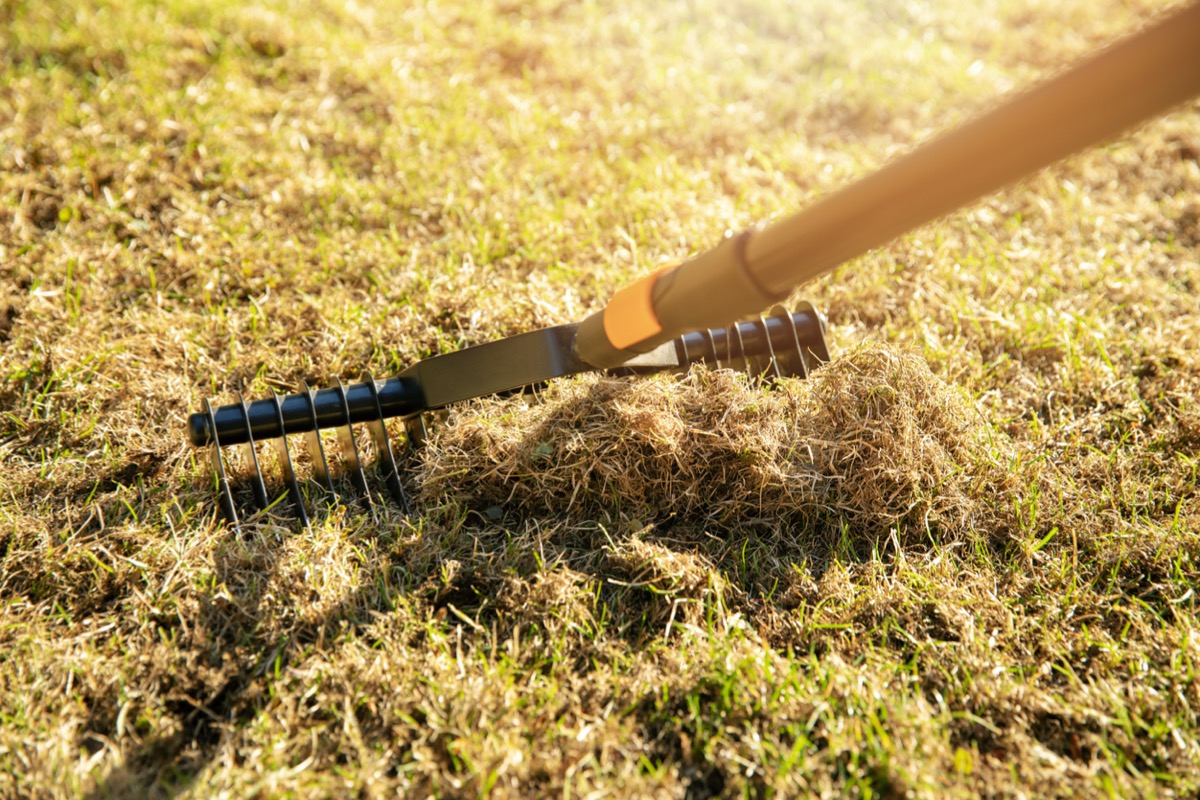
When is the best time to plant grass seed?
The best time to plant grass seed is when the temperatures are at a level that will allow for optimal germination. Due to different growing patterns for cool- and warm-season grasses, this optimal time will vary. Cool-season grasses tend to thrive in the spring or fall when the daytime temperatures are between about 60 and 75 degrees, while warm-season grasses flourish when the temperature is over 80 degrees.
In addition to paying attention to the type of grass you have and which season is best for it to grow, there are a few things to know before planting grass seed. For example, do not plant grass seed right before rain is expected because rain might wash some of the seed away. You also don’t want to plant grass seed for at least a month after applying any chemical herbicides to your lawn.
When should I fertilize the lawn?
Fertilizing at the wrong time of the year could be detrimental to your lawn’s health. Once again, the type of grass you have and your climate will heavily impact when you should apply fertilizer to your lawn. Spring and fall are the primary growth periods for cool-season grasses. As such, these months are also the best times to apply fertilizer to grass. For these grasses, apply fertilizer heavily in the fall and then lightly in the spring for optimal results.

Because warm-season grasses go through their optimal growth period in the later spring and summer, these months are the right time to apply fertilizer. It is important to fertilize warm-season grasses when the daytime highs are between about 80 and 95 degrees; aim to apply fertilizer as the grass begins to turn green.
RELATED: The Best Lawn Fertilizers
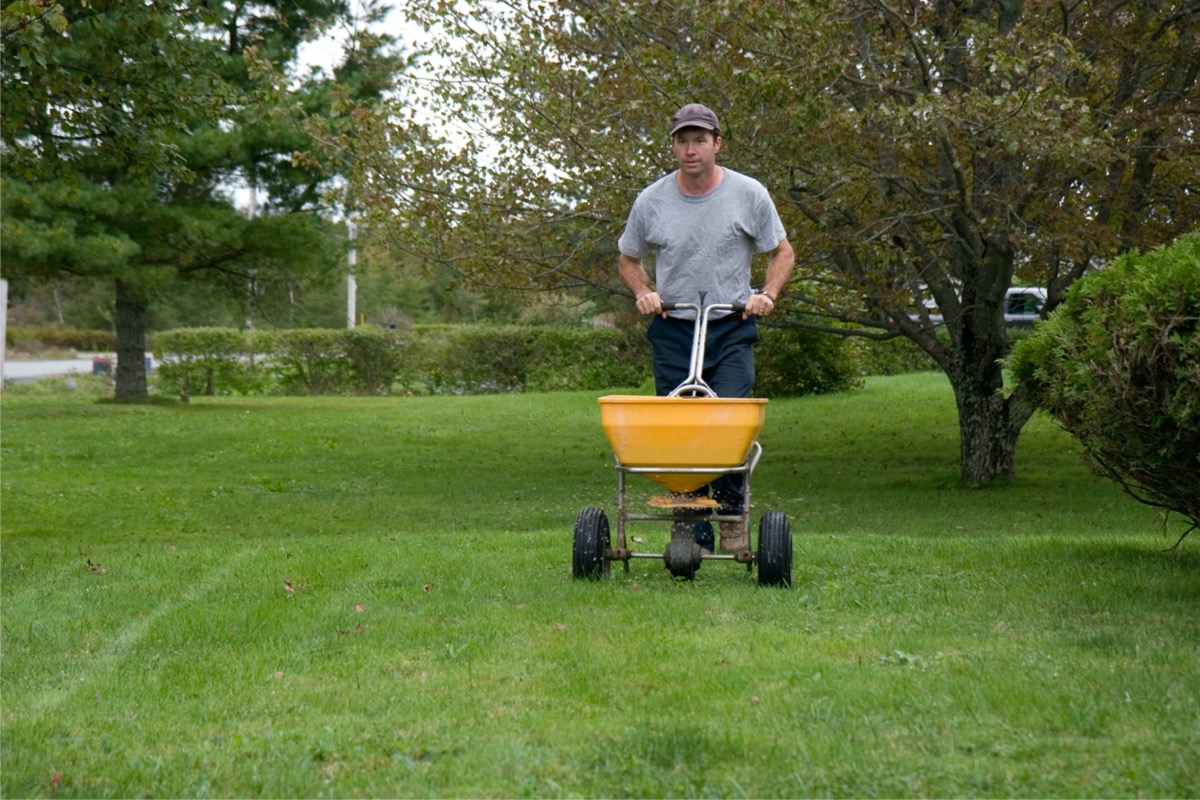
What’s the best time to water grass?
The early morning is the ideal time to water grass. Watering during these early hours of the day helps maximize the amount of water that will be absorbed by the grass. Conversely, if you water during the heat of the day, more water may evaporate before it can be absorbed and reach the roots. Watering at night might lead to fungal problems if the grass stays wet and cool.
If you’ve recently planted grass seed, you’ll need to water it more frequently. While grass seed is germinating, which can take from 5 to 30 days depending on the type of seed, it is important to keep the soil moist at all times. To achieve this goal, aim to water newly planted grass seed early in the morning for about 5 to 10 minutes and then again in the afternoon (after the heat of the day) for another 5 to 10 minutes.
RELATED: The Best Smart Sprinkler Controllers Today
How long should I water the lawn?
A number of factors go into determining how long you should run your sprinklers to water the lawn. First, different types of grasses have different watering needs. Generally speaking, cool-season grasses have a higher water need than warm-season grasses. Many cool-season grasses can need up to 2 inches of water a week, while many warm-season grasses need closer to 1 inch.
After you’ve determined the amount of water your grass type needs each week, the next step is to look up or determine the water output of your sprinkler. You can then use this amount to calculate how long it should be run each day to meet the weekly requirement.
RELATED: Our Favorite Lawn Sprinkler Is Designed to Fit Any Lawn Shape or Size
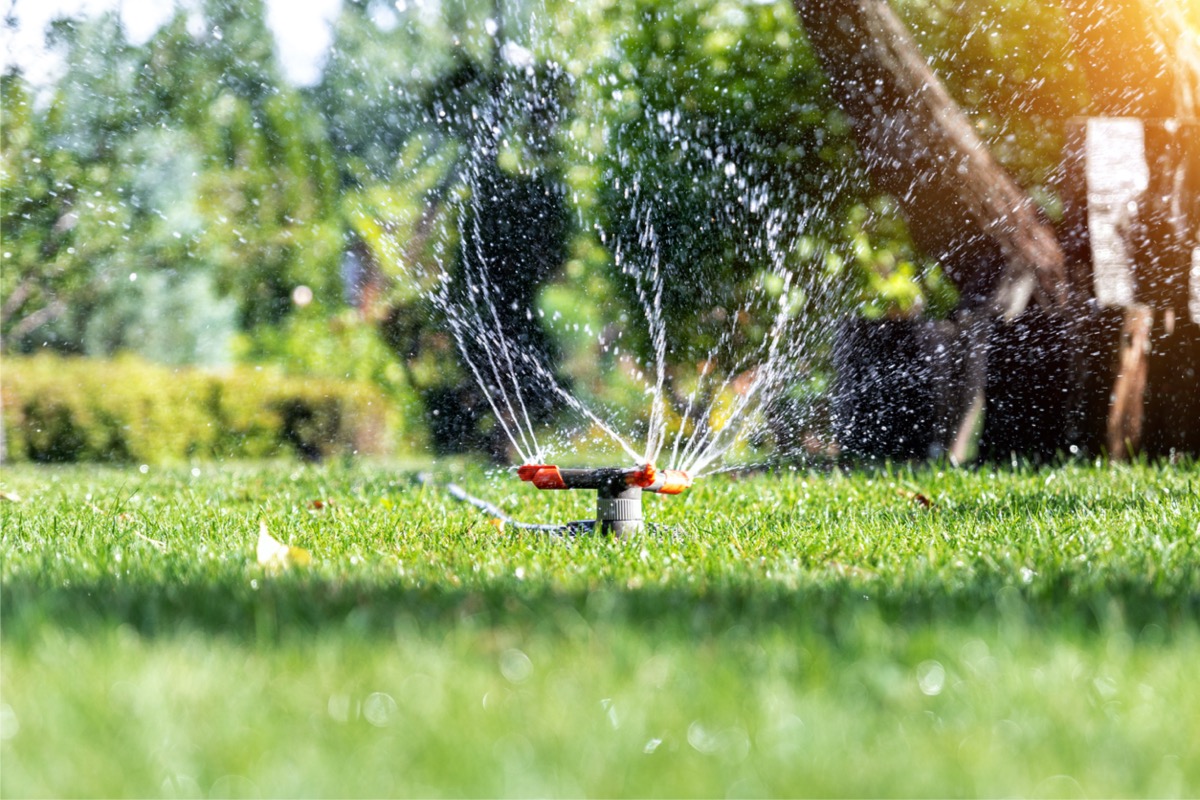
How long does it take for grass to grow?
The amount of time it will take for grass seed to grow will vary depending on the type of seed and the soil temperature. Cool-season grasses grow the quickest, especially with an optimum soil temperature between 50 and 65 degrees (air temperature between 60 and 75 degrees). When these conditions are met and the grass is watered properly, it could fill in a lawn in as little as 30 days.
Warm-season grasses take longer to germinate and develop roots than cool-season grasses. Even when planted in ideal conditions (with a soil temperature between 60 and 75 degrees and daytime highs over 80 degrees), warm-season grasses can take up to 2 months to grow long enough to require mowing. Moreover, it could take warm-season grasses up to a year to establish a full and dense lawn.
RELATED: How to Mow a Lawn the Right Way

When should I apply pre-emergent herbicide?
Finding the right time to apply pre-emergent herbicide to prevent unwanted seeds from sprouting is essential. If applied too early, they might stop the seeds you do want to sprout from growing, and if they are applied too late, you will have missed the window to keep unwanted plants and weeds from growing.
The best time to apply pre-emergent herbicide to your lawn is early spring and fall. In the spring, apply the pre-emergent product when the soil temperatures have been around 55 degrees for the past 48 hours. However, don’t apply pre-emergent to your garden beds during the spring since it can prevent the flowers, fruits, and vegetables that you do want from starting. A soil temperature of 55 degrees is also ideal for fall application of pre-emergent to keep weeds from growing on your lawn or in your garden.
What should I do about lawn fungus?
Large brown patches, areas of slime, mushrooms, or streaks on your lawn could be caused by lawn fungus. The best way to get rid of lawn fungus and ensure it doesn’t plague your lawn again is by taking good care of your lawn.
One lawn-care practice that can help create a healthy lawn is to water the grass early in the morning. This will provide an entire day for the grass to dry, decreasing the chance of a fungus growing. Additionally, it is important to only remove a maximum of one-third of the grass height at a time when mowing. If you remove more than this, it can cause the grass to become weak, which could make it more likely to be impacted by a fungus.
Some additional tips to treat and prevent lawn fungus include applying the recommended amount of fertilizer, keeping your mower blades sharp, and dethatching and aerating the lawn. Topical fungicides are also available if the steps above don’t prevent or clear up the issue.
RELATED: 6 of the Best Lawn Care Services in America, Vetted
Can my dead grass be saved?
Grass that appears dead might simply be dormant. Some grass types go dormant and turn brown during droughts, then return to a green color when watered. However, this isn’t the case for all types of grass, and many will die if they don’t get enough water or sunlight or if the weather is too hot.
If you are not sure whether your grass is dead, try pulling out a small chunk. If you are able to very easily pull the grass from the ground, it is most likely already dead. On the other hand, if the grass does not come out so easily, it may simply be dormant. A few ideas you can try to save dead or dying grass include giving the lawn a fresh cut, watering the grass during the early morning hours, removing weeds, and aerating the lawn.
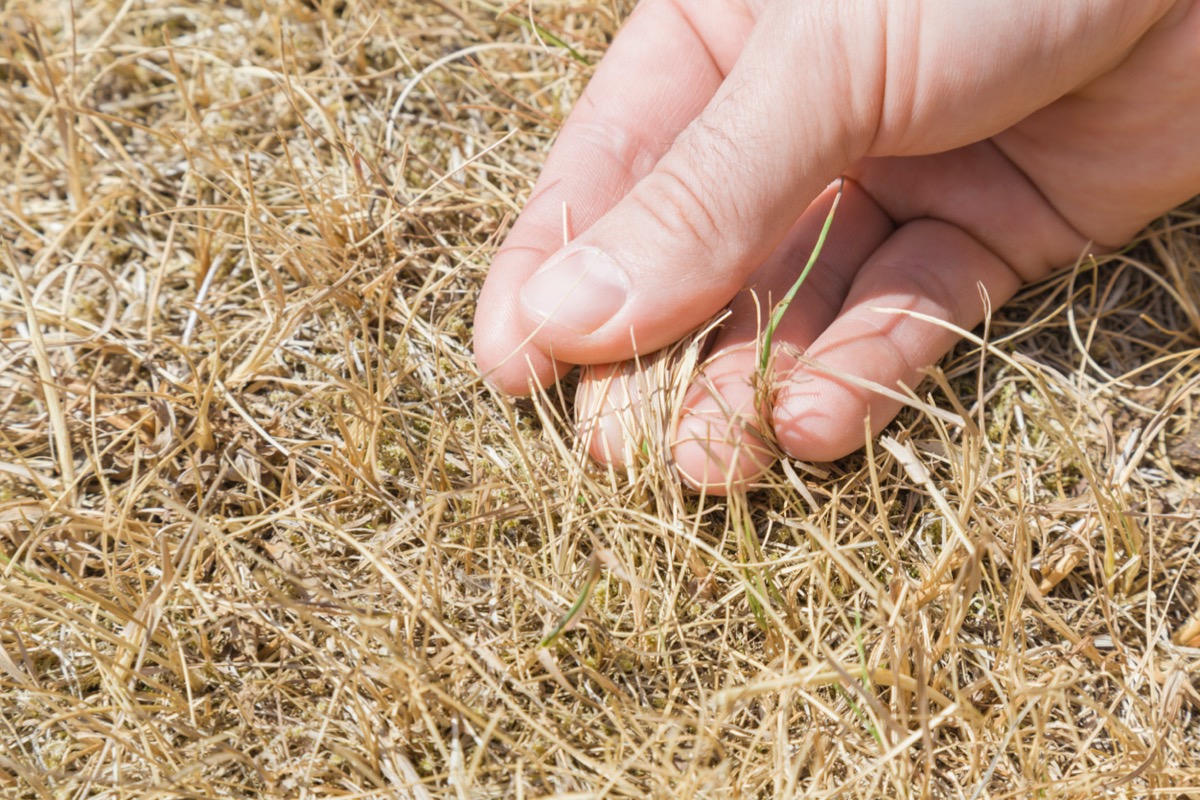
How do I get rid of mushrooms in the lawn?
While lawn mushrooms are generally harmless and can even be a sign that the soil is healthy, they can also be unsightly and some are toxic to children or pets. Because fungi and mushrooms thrive in damp and dark conditions, one thing you can do to prevent mushrooms from growing is to aerate the lawn to improve drainage.
Additionally, mowing your grass more frequently can help. When the grass is shorter, it will dry out more quickly, leaving less moisture for the mushrooms to grow. Likewise, watering your grass earlier in the morning can also help. This way, the grass will have time to dry fully before it becomes darker and cooler at night.
What should I do with grass clippings?
There are actually a few different things you can do with your grass clippings. The easiest, and often the best idea for your lawn, is to leave the grass clippings on the lawn after mowing. As long as you’re mowing frequently enough that your grass isn’t too tall (ideally, moving only about one-third of the height at a time), the grass clippings can help fertilize the lawn naturally, regulate the soil temperature, and create a habitat for earthworms and beneficial insects.
However, if your grass is too long before cutting it, you won’t want to leave the clippings on the lawn. Leaving a thicker patch of clippings could cause lawn disease, areas of dead grass, or even insect infestations. If you need to remove the clippings from your lawn, consider adding them to a compost pile or using them to mulch a garden bed.
RELATED: Solved! The Great Debate on What to Do with Grass Clippings
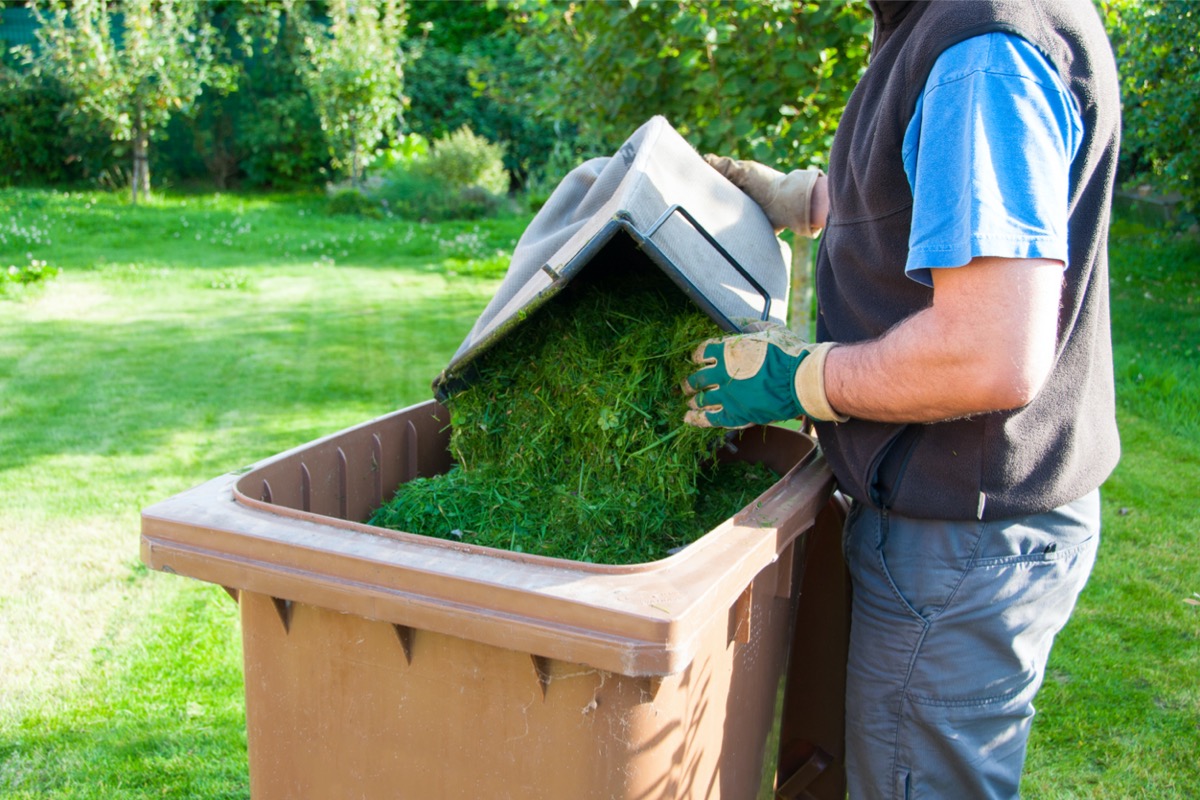
What’s the correct way to mow the lawn?
There are a few important tips to keep in mind when learning how to properly mow the lawn. Begin by edging your yard so you won’t risk bumping into fences, trees, or other hardscaping with the mower. This will also allow you to move more quickly when you’re ready to start mowing.
Make a point of mowing your lawn frequently enough that you aren’t mowing more than one-third of the length of the grass off at a time, since doing so could be detrimental to the overall health of your lawn. So, if your grass is 3 inches thick, you should not set your mower blades to a height under 2 inches. During peak growing seasons, this could mean mowing about once every 5 days or so.
When mowing, change your routine/directions each time. Mowing in different directions from week to week, such as a horizontal path one week and a diagonal path the next, can reduce soil compaction and wear on the grass. Finally, do a quick cleanup to remove clippings from walkways, flower beds, or other areas where they don’t belong.
